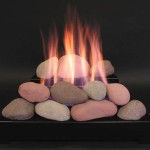DIY Fire Starters for Fireplace
Starting a fire in a fireplace can be a delightful and cozy experience, but it can also be frustrating if the kindling and logs don't catch easily. Fire starters are essential tools for igniting a successful fire, and they come in various forms, from commercial products to do-it-yourself options. This article will explore several DIY fire starter recipes that are simple to make, cost-effective, and efficient.
Pine Cones and Wax
Pine cones are a natural and readily available material that works well for fire starters. The resin in pine cones provides a readily ignitable fuel source, making them ideal for starting a fire. To create pine cone fire starters, you will need:
- Dried pine cones
- Paraffin wax
- A double boiler or a heat-safe container
- A metal pan or tray
Melt the paraffin wax in the double boiler or heat-safe container. Dip the pine cones into the melted wax, ensuring they are fully coated. Allow the wax to solidify before storing the fire starters in a dry place.
Cardboard Egg Cartons and Wax
Cardboard egg cartons offer a convenient and readily available material for making fire starters. The compartments in the carton provide individual fire starter units, making them easy to store and use. To create cardboard egg carton fire starters, you will need:
- Cardboard egg cartons
- Paraffin wax
- A double boiler or a heat-safe container
- Used dryer lint
Melt the paraffin wax in the double boiler or heat-safe container. Fill each compartment of the egg carton with dryer lint. Pour the melted wax into the compartments, ensuring the lint is fully submerged. Allow the wax to solidify before removing the individual fire starters from the carton.
Cotton Balls and Vaseline
Cotton balls are a highly absorbent material, making them excellent for holding fuel. Combine cotton balls with petroleum jelly, also known as Vaseline, for a simple and effective fire starter. You will need:
- Cotton balls
- Petroleum jelly
Place cotton balls in a bowl, and thoroughly coat them with petroleum jelly. Allow the cotton balls to dry, and then store them in an airtight container for later use.
Safety Tips
When creating and using DIY fire starters, it is important to prioritize safety. Always work in a well-ventilated area, and avoid using flammable materials near open flames. Ensure the wax is completely cooled before handling the fire starters. Always supervise children when using fire starters, and keep them out of reach.
Advantages of DIY Fire Starters
Making your own fire starters offers several advantages:
- Cost-effectiveness: DIY fire starters are generally less expensive than commercially available options.
- Customization: You can customize the size and shape of your fire starters to suit your needs.
- Environmental consciousness: DIY fire starters often use recycled materials and reduce waste.
DIY fire starters are a practical and convenient way to ignite a fire in your fireplace. Utilize readily available materials and simple techniques to create your own fire starters, ensuring a cozy and successful fire experience.

17 Homemade Diy Fire Starters You Can Make That Actually Work

Pinecone Fire Starters Diy Stonegable

Homemade Fire Starters 3 Ways To Make Them The Art Of Doing Stuff

Diy Fire Starters Handmade Gifts For The Holidays Hearth And Vine

17 Homemade Diy Fire Starters You Can Make That Actually Work

Diy Fire Starters Only Requires Two Unexpected Items Blessed Beyond Crazy

17 Homemade Diy Fire Starters You Can Make That Actually Work

Homemade Fire Starters 3 Ways To Make Them The Art Of Doing Stuff

8 Simple Homemade Fire Starters An Off Grid Life

17 Homemade Diy Fire Starters You Can Make That Actually Work
Related Posts








